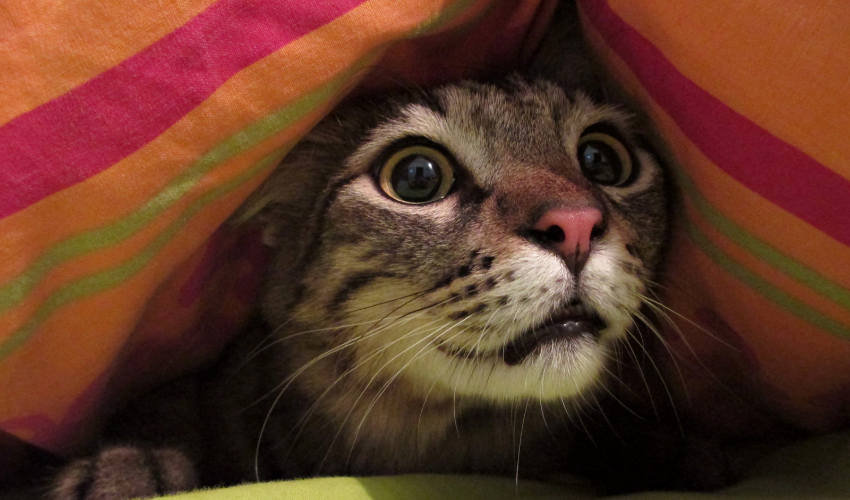Hyperlipidemia in cats and dogs refers to elevated levels of lipids (fats) in the blood, including cholesterol and triglycerides. While some amount of lipids in the blood is normal and necessary for various bodily functions, excessively high levels can lead to health problems and complications.
Why Do Cats and Dogs Get Hyperlipidemia?
Hyperlipidemia can occur in cats and dogs due to various factors, including:
Dietary Factors: High-fat diets or diets rich in cholesterol can contribute to the development of hyperlipidemia in cats and dogs. Consuming excessive amounts of fatty foods, such as table scraps, fatty meats, or high-fat treats, can lead to elevated lipid levels in the blood.
Obesity: Overweight or obese cats and dogs are at increased risk of developing hyperlipidemia due to the excess accumulation of fat tissue in the body. Obesity can disrupt lipid metabolism and lead to dyslipidemia, including elevated cholesterol and triglyceride levels.
Genetics: Some breeds of cats and dogs may be predisposed to hyperlipidemia due to genetic factors. Certain breeds, such as Miniature Schnauzers, Beagles, and Siamese cats, may have a higher risk of developing lipid abnormalities.
Endocrine Disorders: Underlying endocrine disorders, such as hypothyroidism (low thyroid function) or diabetes mellitus, can contribute to the development of hyperlipidemia in cats and dogs. These conditions can disrupt lipid metabolism and lead to abnormal lipid profiles.
Liver Disease: Liver diseases, such as hepatobiliary disorders or hepatic lipidosis (fatty liver disease), can disrupt the metabolism and clearance of lipids from the blood, leading to elevated lipid levels.
Kidney Disease: Chronic kidney disease (CKD) or renal insufficiency can also affect lipid metabolism and lead to dyslipidemia in cats and dogs.
What Are The Symptoms of Hyperlipidemia?
Symptoms of hyperlipidemia in cats and dogs may vary depending on the underlying cause and severity of the condition. Some common signs and symptoms may include:
- Increased thirst and urination
- Weight gain or obesity
- Lethargy or decreased activity
- Loss of appetite
- Vomiting or diarrhea
- Abdominal discomfort or pain
How to Prevent Hyperlipidemia in Cats and Dogs?
Preventing hyperlipidemia in cats and dogs involves a combination of dietary management, weight management, regular exercise, and addressing any underlying health conditions that may contribute to lipid abnormalities. Here are some tips to help prevent hyperlipidemia in cats and dogs:
Provide a Balanced Diet: Feed your pet a balanced and nutritionally complete diet that is appropriate for their age, size, breed, and health status. Choose high-quality commercial pet foods that are formulated to meet the nutritional needs of cats and dogs. Avoid feeding excessive amounts of high-fat or high-calorie foods, such as table scraps, fatty meats, or high-fat treats.
Monitor Portion Sizes: Pay attention to portion sizes and avoid overfeeding your pet. Follow feeding guidelines provided by your veterinarian or pet food manufacturer based on your pet’s weight, activity level, and energy needs. Avoid free-feeding and measure out appropriate portions to help prevent obesity and weight gain.
Promote Weight Management: Maintain a healthy weight for your pet through regular monitoring, diet management, and exercise. Obesity is a significant risk factor for hyperlipidemia in cats and dogs, so it’s essential to keep your pet at a healthy weight to reduce the risk of lipid abnormalities.
Limit High-Fat Treats: Limit the intake of high-fat treats and snacks, such as fatty table scraps, bacon, cheese, or processed meats. Instead, offer healthier alternatives, such as fresh fruits or vegetables, lean meats, or commercially available low-fat or low-calorie treats specifically formulated for pets.
Encourage Regular Exercise: Provide regular exercise and physical activity to help your pet maintain a healthy weight and metabolism. Engage your pet in daily walks, play sessions, interactive games, or other forms of physical activity to promote cardiovascular health, muscle tone, and overall well-being.
Schedule Regular Veterinary Checkups: Schedule regular veterinary checkups for your pet to monitor their overall health and assess for any signs of underlying health conditions that may contribute to hyperlipidemia. Your veterinarian can perform routine blood tests to monitor lipid levels and identify any potential issues early on.
Treat Underlying Health Conditions: Address any underlying health conditions that may predispose your pet to hyperlipidemia, such as hypothyroidism, diabetes mellitus, liver disease, or kidney disease. Follow your veterinarian’s recommendations for managing and treating these conditions to help prevent lipid abnormalities.
Follow Dietary Recommendations: Follow any dietary recommendations provided by your veterinarian for managing or preventing hyperlipidemia in your pet. This may include feeding a prescription diet formulated for pets with lipid abnormalities or specific health conditions.
By following these preventive measures and working closely with your veterinarian to address any underlying health concerns, you can help reduce the risk of hyperlipidemia and promote the overall health and well-being of your fur babies.
Diagnosis of hyperlipidemia in your beloved fur babies typically involves blood tests to measure lipid levels, including cholesterol and triglycerides. Treatment of hyperlipidemia may involve dietary management, weight management, exercise, and addressing any underlying health conditions contributing to the lipid abnormalities. In some cases, medications may be prescribed to help lower lipid levels and reduce the risk of complications associated with hyperlipidemia. It’s essential to work closely with your veterinarian to develop a comprehensive treatment plan tailored to your pet’s specific needs and health status.












